iPhone 6 Plus vs Nexus 6 vs Note 4: Which is best value?
In the market for a big screen smartphone? Read on and find out if the iPhone 6 Plus, Nexus 6 or Note 4 should be your next device
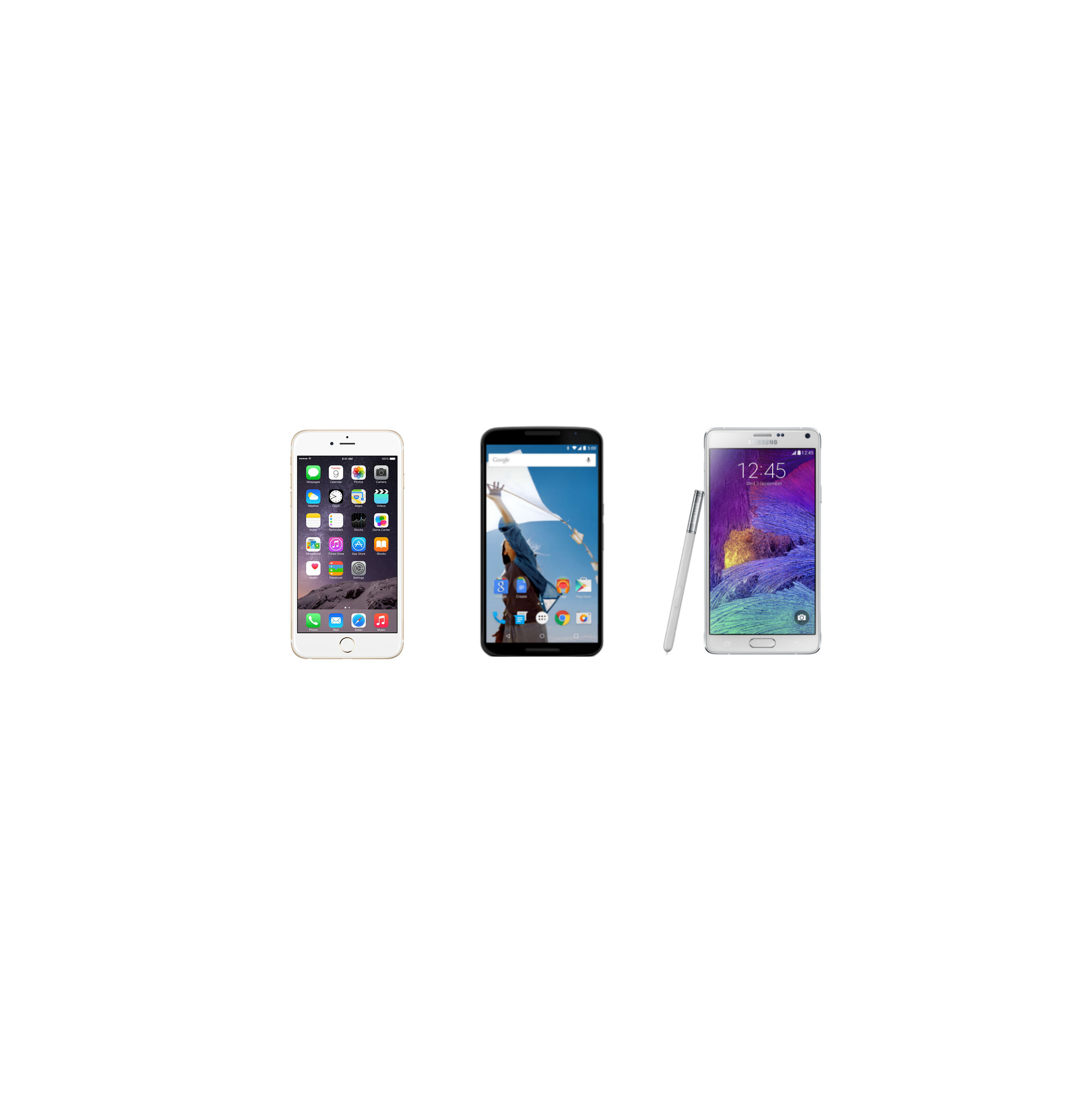
If you want a large screen smartphone, you're spoilt for choice with Apple, Google and Samsung all offering up flagship devices.
The Nexus 6, iPhone 6 Plus and Note 4 all claim to be "the" big screen device, but which one offers the best value?
Why buy a phablet?
- Devices with 5in+ screens are ideal for web browsing, typing and multimedia consumption.
- Phablets include bigger batteries so you don't have to worry about charging devices in the middle of the day.
Nexus 6
The Nexus 6 is the newest on the list and the first handset to ship with Android Lollipop 5.0. Designed and manufactured by Motorola, the device is a giant Moto X (2014). The large 5.96in display makes it the biggest device here.
Key specs
5.96in AMOLED display (2560 x 1440), 2.7GHz quad-core Qualcomm processor, 3GB RAM, 32/64GB internal memory, 13-megapixel camera, water resistant, 184g
Pros
- Solid build
Everything about the build oozes quality, from the display curving around the edge to the metallic Nexus branding on the soft-touch back. Motorola has used Gorilla Glass 3 for the display and the device is water resistant. It's not IP certified like the Xperia Z range or the Galaxy S5, but it's useful nonetheless.
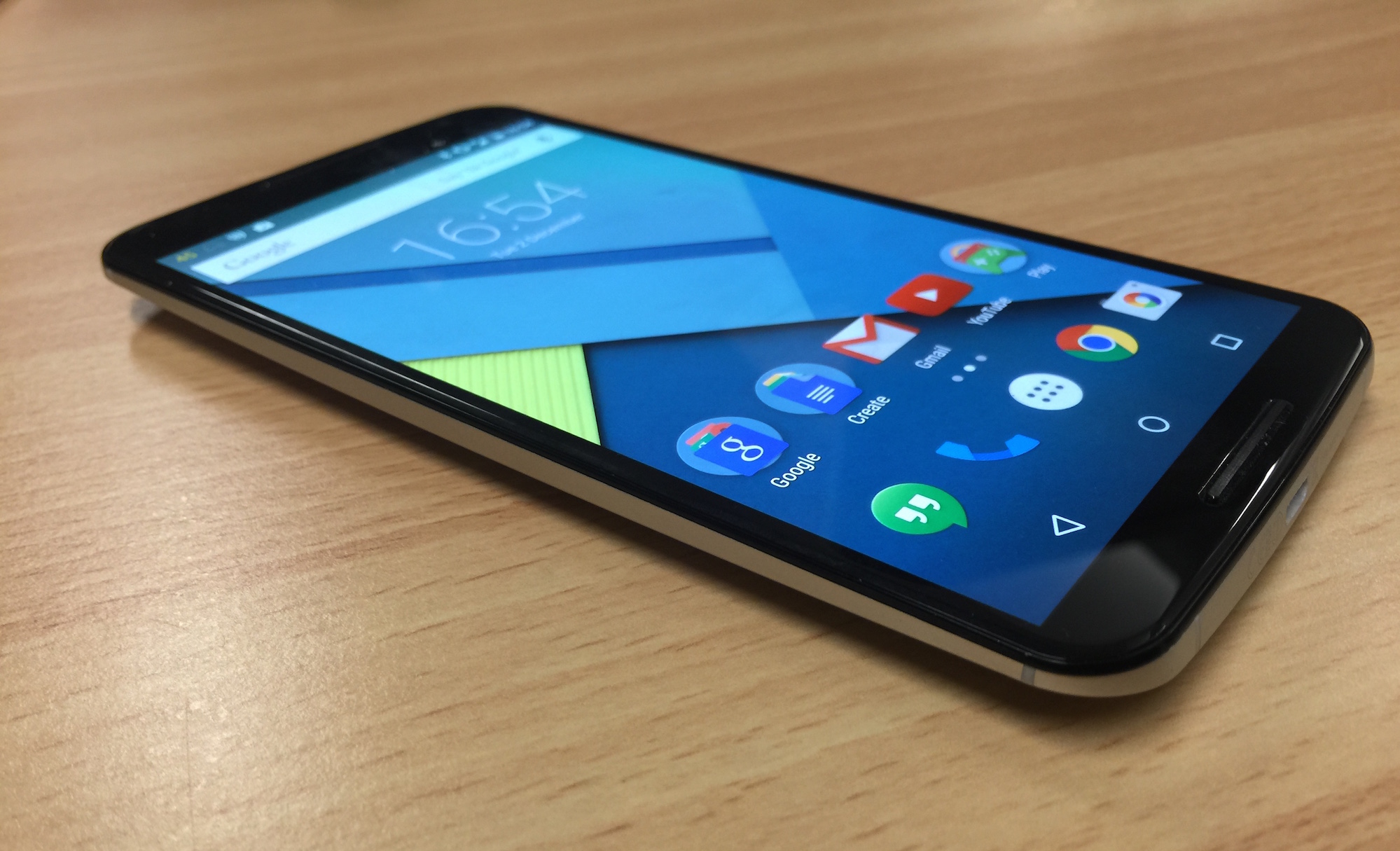
- Pure Android Lollipop 5.0
The Nexus brand means this device runs pure Android 5.0, free of any resource-hungry customisations. This translates to a smooth performance and the device is fully customisable. It also means the handset will be first in line for the 2015 Android update.
- Fast charging out-of-the-box
Motorola has optimised the device to make use of the Qualcomm's Quick Charge 2.0 technology and ships devices with a "turbo" charger in the box.
When the battery is in the red-zone, you can hook it up to a charge for 15 minutes and get up to 6 hours of usage.
Cons
Screen quality
Straying into tablet territory, the Nexus 6 has a mammoth 5.96in display. Although it has a razor-sharp 2560 x 1440 resolution (493ppi) on paper, there are a couple of issues with the screen.
The 'adaptive brightness' setting built into Lollipop constantly adjusts the screen depending on which app you are using. Even turning it off in the settings doesn't stop it from making adjustments.
The change in brightness is noticeable when you're moving from dark backgrounds to pure whites. When in the Settings menu, white tabs are super bright, but switch over to the web browser and you'll see the screen dim as the display compensates to show a larger area of white.
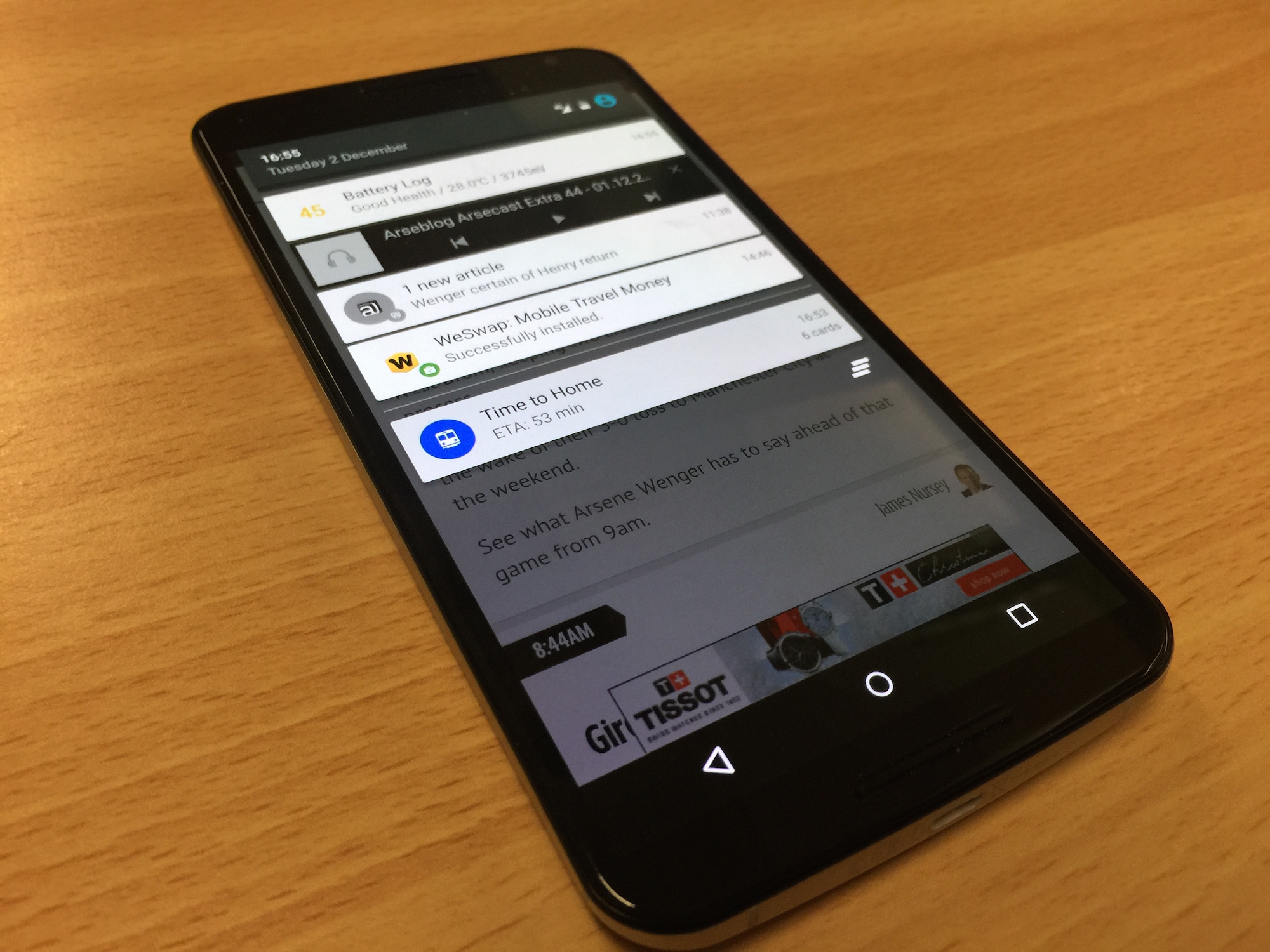
You can expect brightness to hover between 260 - 280 cd/m2 - which isn't atrocious, but is well below competing handsets.
When the display on the Nexus 6 is turned down to its lowest levels some users have also reported a notable pink tinge.
- Battery life longevity & no micro SD support
The Nexus 6 is powered by a 3,220mAh battery pack - the same size as the cell in the Note 4. But the Google device does have the larger screen.
Power users can expect to make it through the day without charging. However, it's non-removable nature means there's no way to swap it out.
Whilst the 32/64GB models should keep you going, the lack of micro SD card support is missed.
- Curved back makes it unstable
The Nexus is unable to sit flush on flat surfaces due to its curved design. It starts wobbling and spinning if you try and interact with it using one hand. This makes it almost impossible to send a text or navigate the device without picking it up or using two hands to hold it steady.
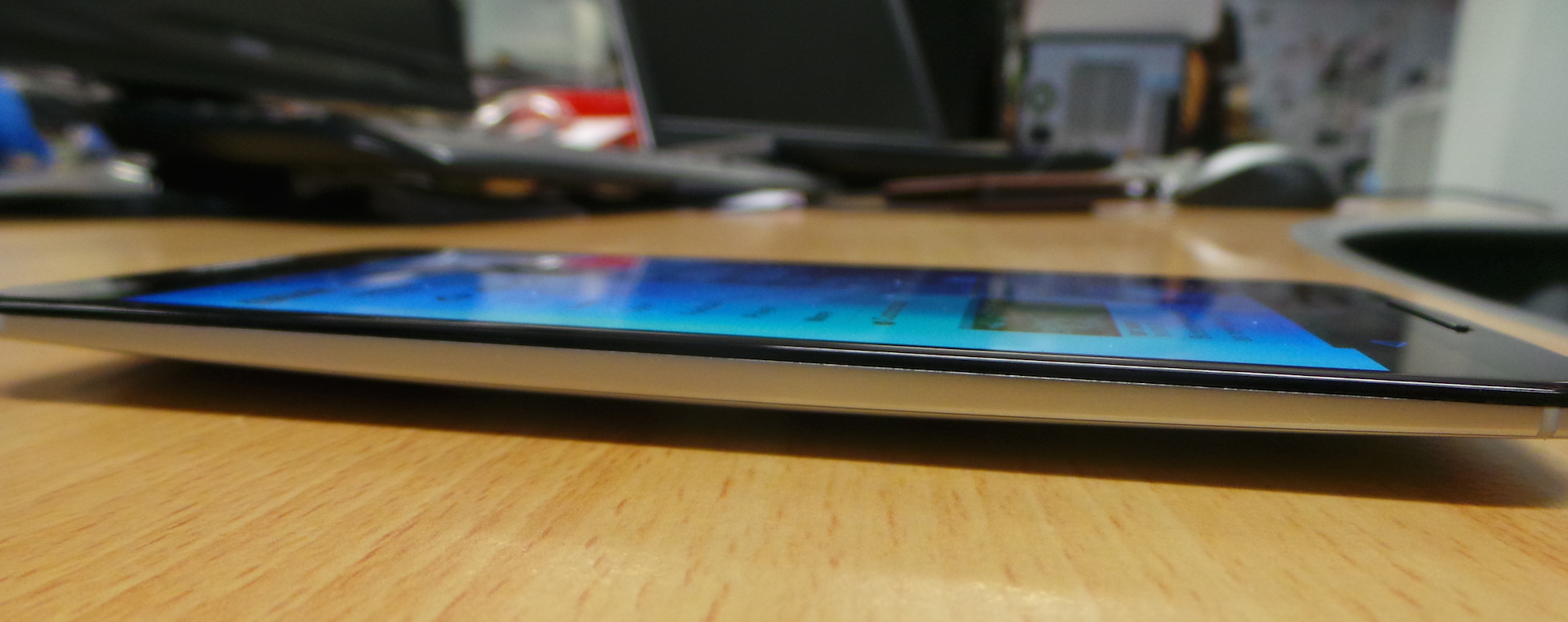
------------------------------------------------------------------------------------------
Galaxy Note 4
Samsung's popular phablet range is on its fourth generation, so the firm has had time to refine the product. The Note 4 is shipping with Android KitKat 4.4.4, but an update to Lollipop 5.0 has been confirmed and will be rolling out to the flagship device soon.
Key specs5.7in Super AMOLED display (2560 x 1440), 2.7GHz quad-core Qualcomm processor (Exynos Octa-core in some regions), 3GB RAM, 32GB internal memory + micro SD card support (128GB), 16-megapixel camera, fingerprint scanner, heart rate monitor, 176g
Pros
- Class-leading display
With a resolution of 2560 x 1440 pixels, the 5.7in Super AMOLED panel squeezes 515 pixels into every inch. During indoor use you can expect maximum brightness of 340 cd/m2.
When the device detects sunlight, an outdoor readability mode kicks in, boosting the screen to the 500 cd/m2 mark.
Being a Super AMOLED panel, it retains Samsung's trademark high-colour saturation. But there are no problems with tinting as whites are pure and blacks are deep.
Testing from screen specialist DisplayMate supports our opinion the 5.7in panel on the Note 4 is the best available on the market.
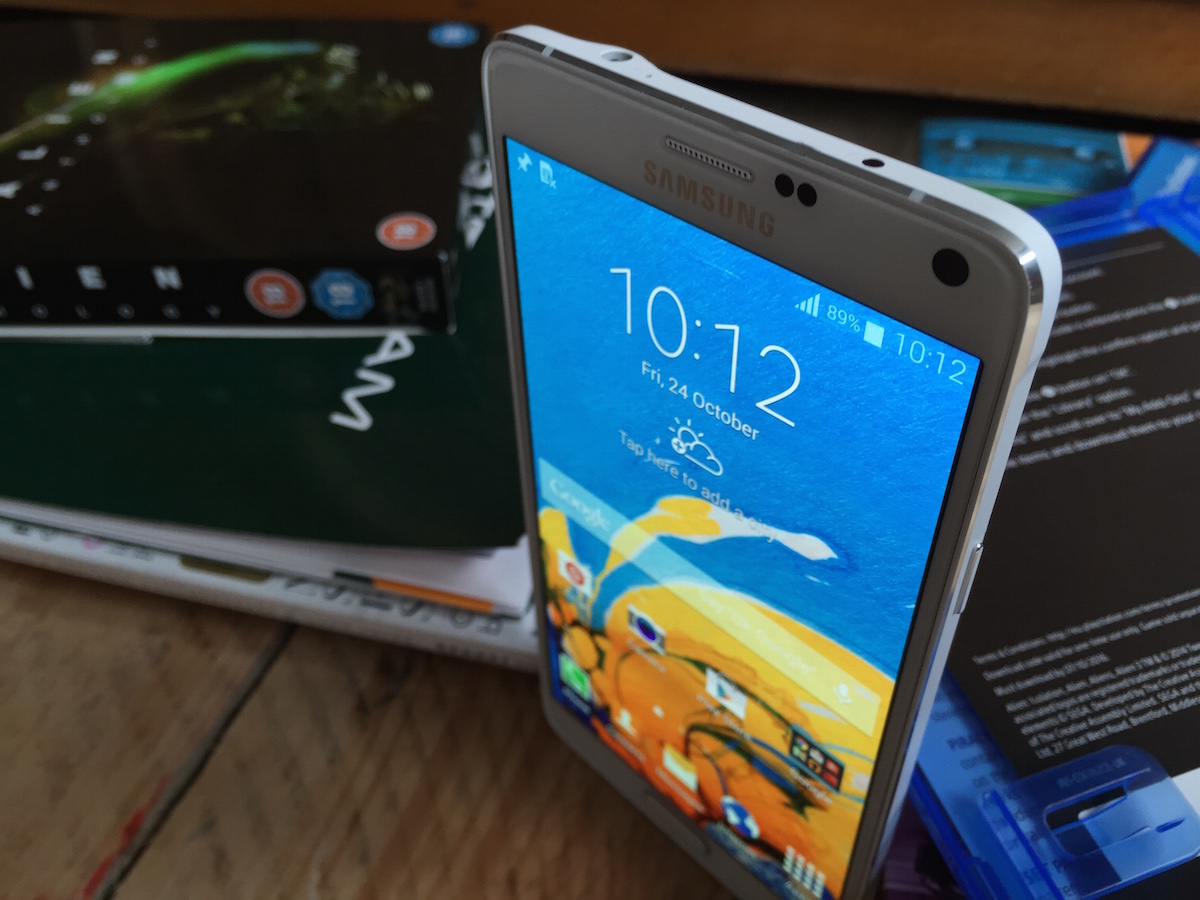
- Excellent battery life
Another strength of the Note range is the battery life. Samsung has opted for a 3,220mAh cell and together with its various battery saving modes this will last beyond 24 hours.
Fast charging is supported, so the Note 4 can be charged from 0 to 50 per cent in 30 minutes.
Power users also have the option of carrying a spare pack around or replacing the battery after it starts to drop with long-term use.
- S-Pen
The Note 4 is the only phablet in this group to include a stylus. The S-Pen comes with 2048 points of pressure, so it's got the sensitivity for precise image work.
It's also great for jotting down notes, annotating documents or screen grabbing. Handwriting recognition means you can use the stylus to pen long-form content too.
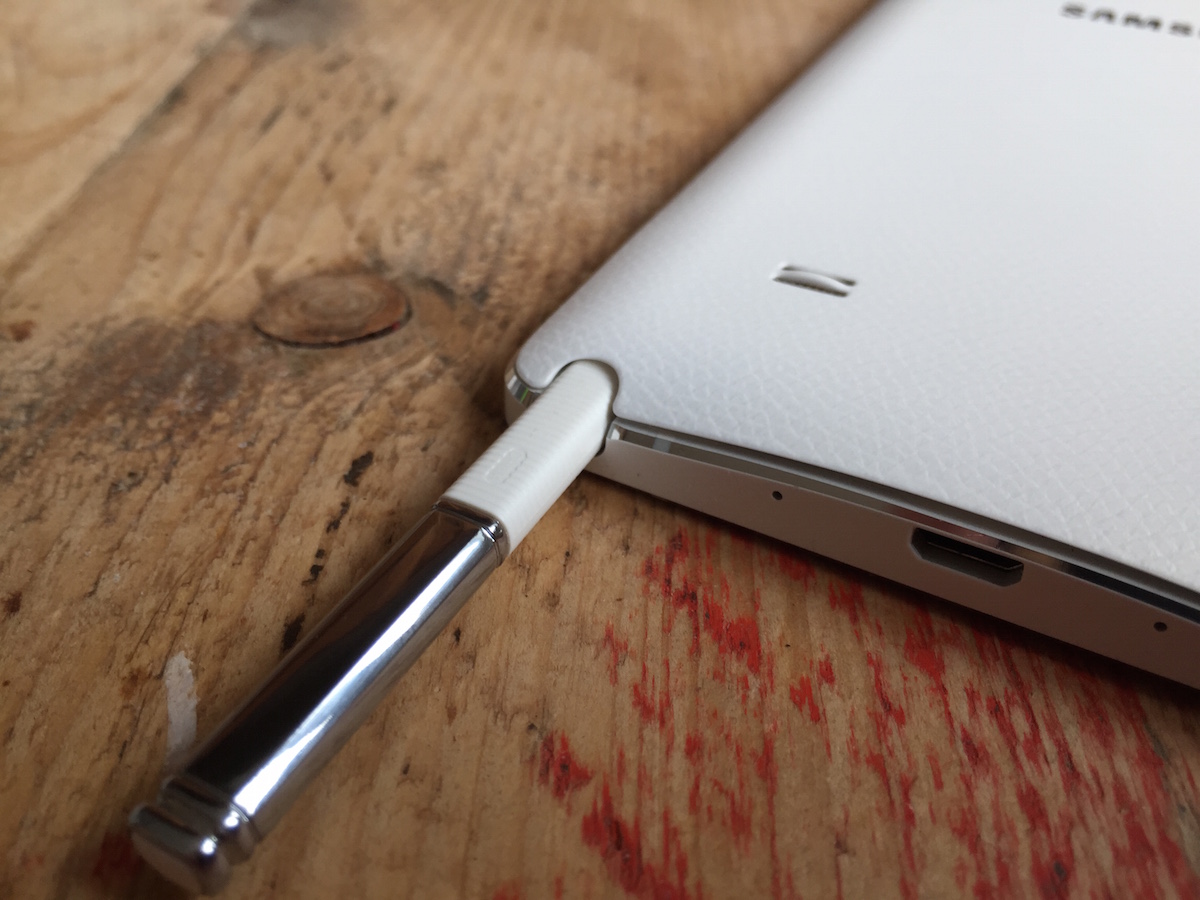
Cons
- Overwhelming software
Samsung overlays its TouchWiz interface onto Android. This allows the Note to have numerous features including the ability to multitask.
However, there are lots of settings and you will have to spend time going through. It's not a massive issue as you spend the first few hours with any device digging through all the options. Just keep in mind that you'll probably end up disabling a fair few features you won't need.
- Some gimmicks
In its eagerness to stay ahead of the competition, the Note 4 is packed with a few features that are either unnecessary or feel rushed. We can point to the eye-tracking software and the heart-rate sensors as features you probably won't use.
The fingerprint scanner isn't as good as Apple's Touch ID either. But it's not a major problem as you're not forced to use it.
------------------------------------------------------------------------------------------
iPhone 6 Plus
The biggest iPhone to-date has the best screen and battery life of any Apple smartphone. How does the flagship iOS 8 device compare to its Android rivals?
Key specs5.5in LCD display (1920 x 1080), 1.4GHz dual-core A8 processor + M8 co-processor, 1GB RAM, 16/64/128GB internal memory, 8-megapixel, Touch ID, Apple Pay, 172g
Pros
- Solid all rounder
iOS arguably edges the Google Play Store when it comes to the quality of apps, books, TV shows, films and games content offered.
Performance is smooth because there is no bloatware, and thanks to the Continuity feature the 6 Plus can be synced with other Apple devices - such as Macs and iPads via Wi-Fi. This means you can answer phone calls on your Mac or continue browsing exactly where you left off when switching devices.
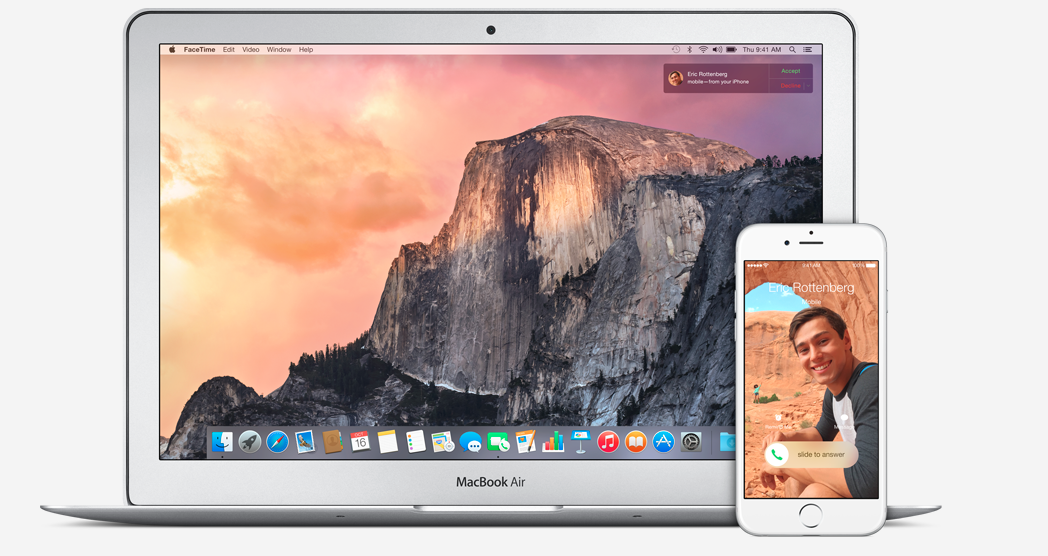
The 6 Plus also has one of the best cameras on the market.
The 8-megapixel sensor may not be the largest around, but thanks to Focus Pixels it's ultra-fast when it comes to focusing and top notch image processing helps to ensure excellent picture quality in most conditions.
The biometrics on the iPhone have yet to be beaten. Touch ID is excellent and makes the iOS device the easiest handset to unlock as you just press the home button.
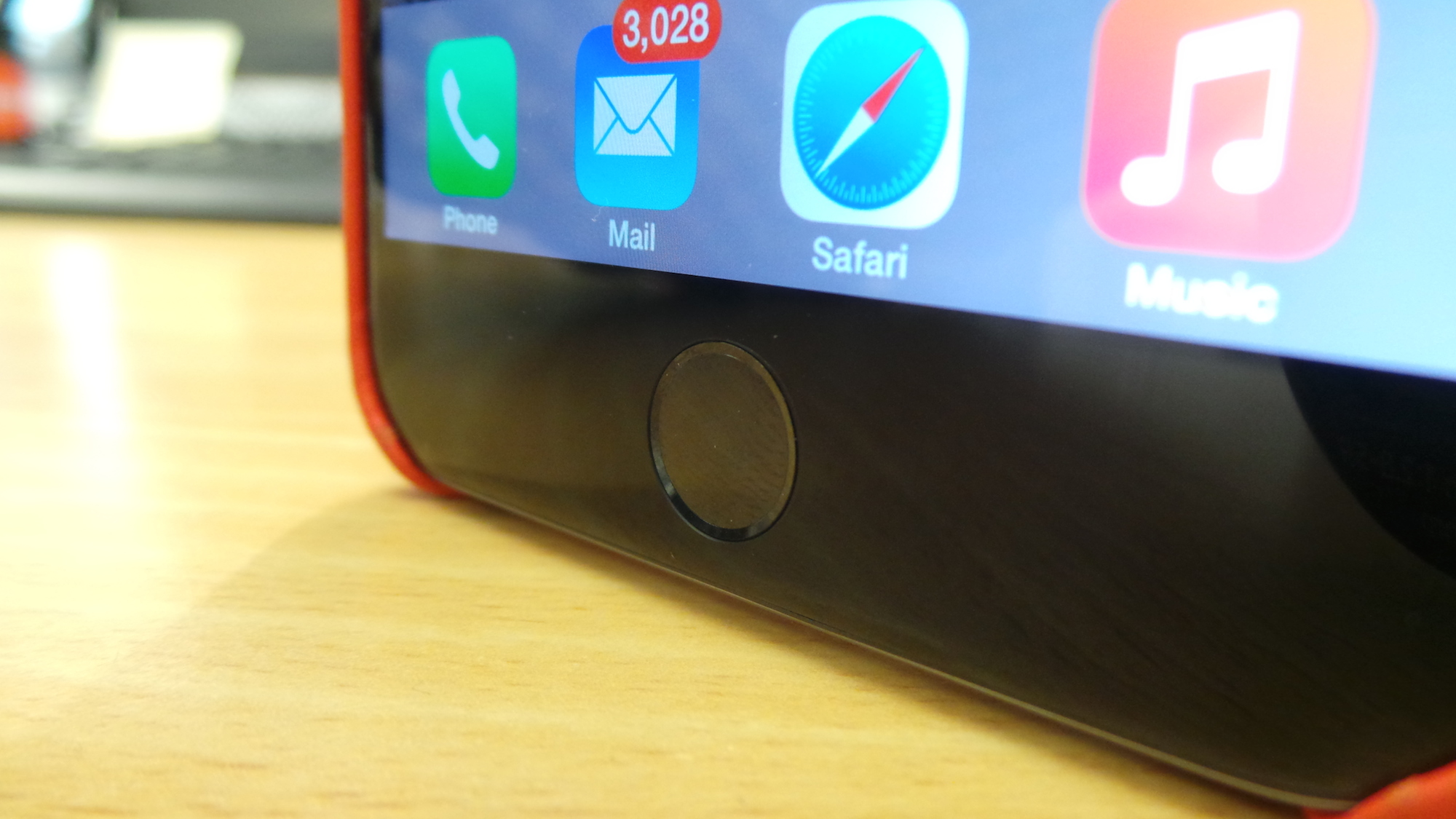
- All-day battery life
Apple has been conservative by using a 2,915mAh battery. However, the 6 Plus is still the first iPhone we've been able to use comfortably through the day without worrying about the battery.
The 6 Plus is up there with the Note 4 before the latters Ultra Power Saving mode is taken into consideration and also outdoes the Nexus 6.
- Excellent full HD display
The 6 Plus is the first iPhone to include a full HD (1920x 1080) display. The 5.5in LCD panel has a density of 401ppi and a scorching maximum brightness of 566 cd/m2.
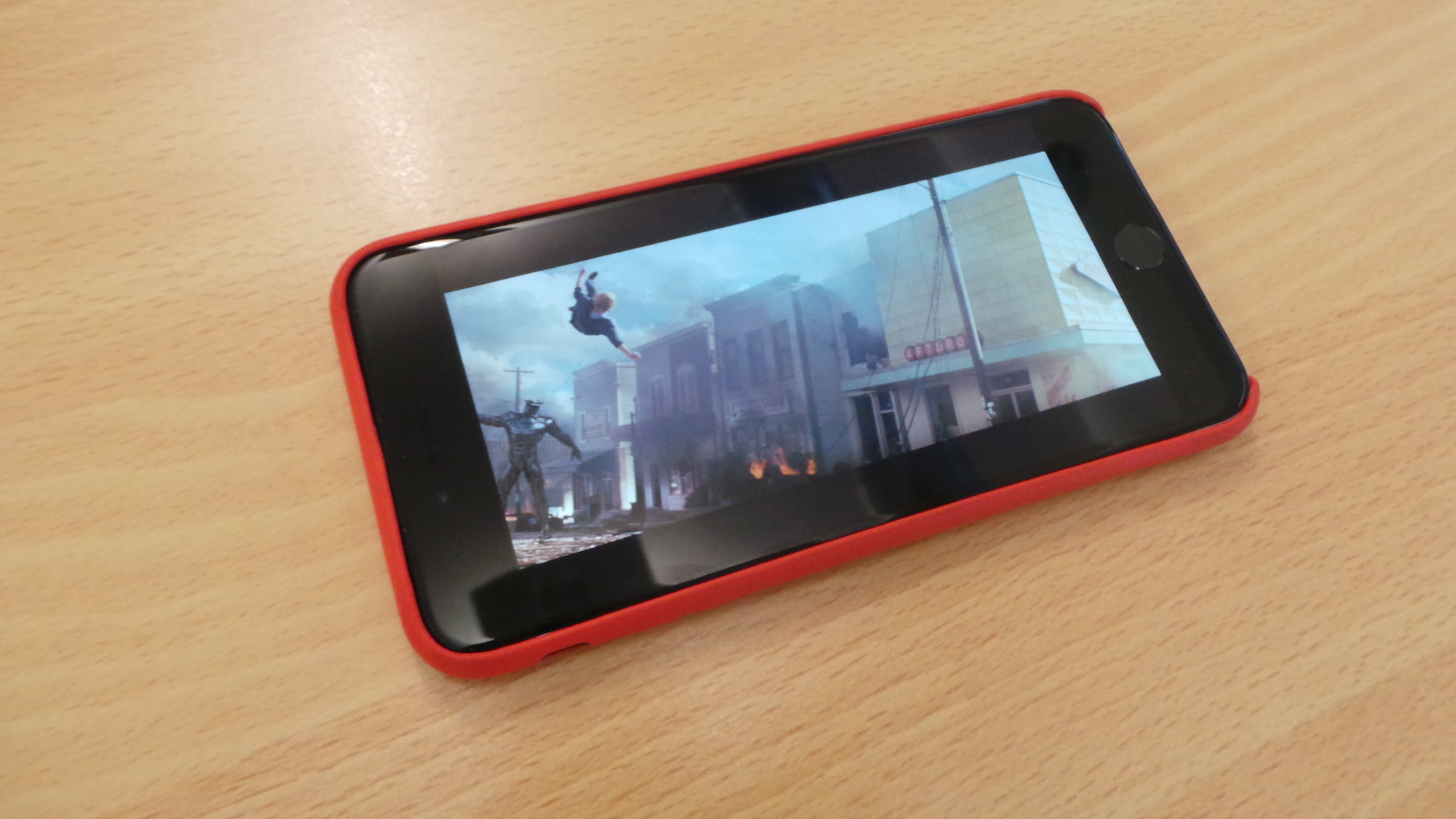
Colour accuracy is outstanding because the LCD technology delivers natural colours. DisplayMate has labelled the 6 Plus panel the best LCD screen on the market, but overall the Note 4 display is rated as the top-dog.
Cons
- No 32GB option or micro SD support
Apple decided to axe the mid-range 32GB model when it introduced the iPhone 6 and 6 Plus. With the lack of micro SD card storage on iPhones, buying the entry-level 16GB model is not ideal. You'll fill up the storage in no time with apps, films, movies, music and photos. When it comes to updating iOS, you're likely to have storage issues.
- Design quirks
The huge chassis of the 6 Plus is nowhere near as svelte as the iPhone 6. Despite having the smallest 5.5in screen in this test, it's almost identical in length to the Nexus 6 (5.96in) and could do with a trim around the bezels.
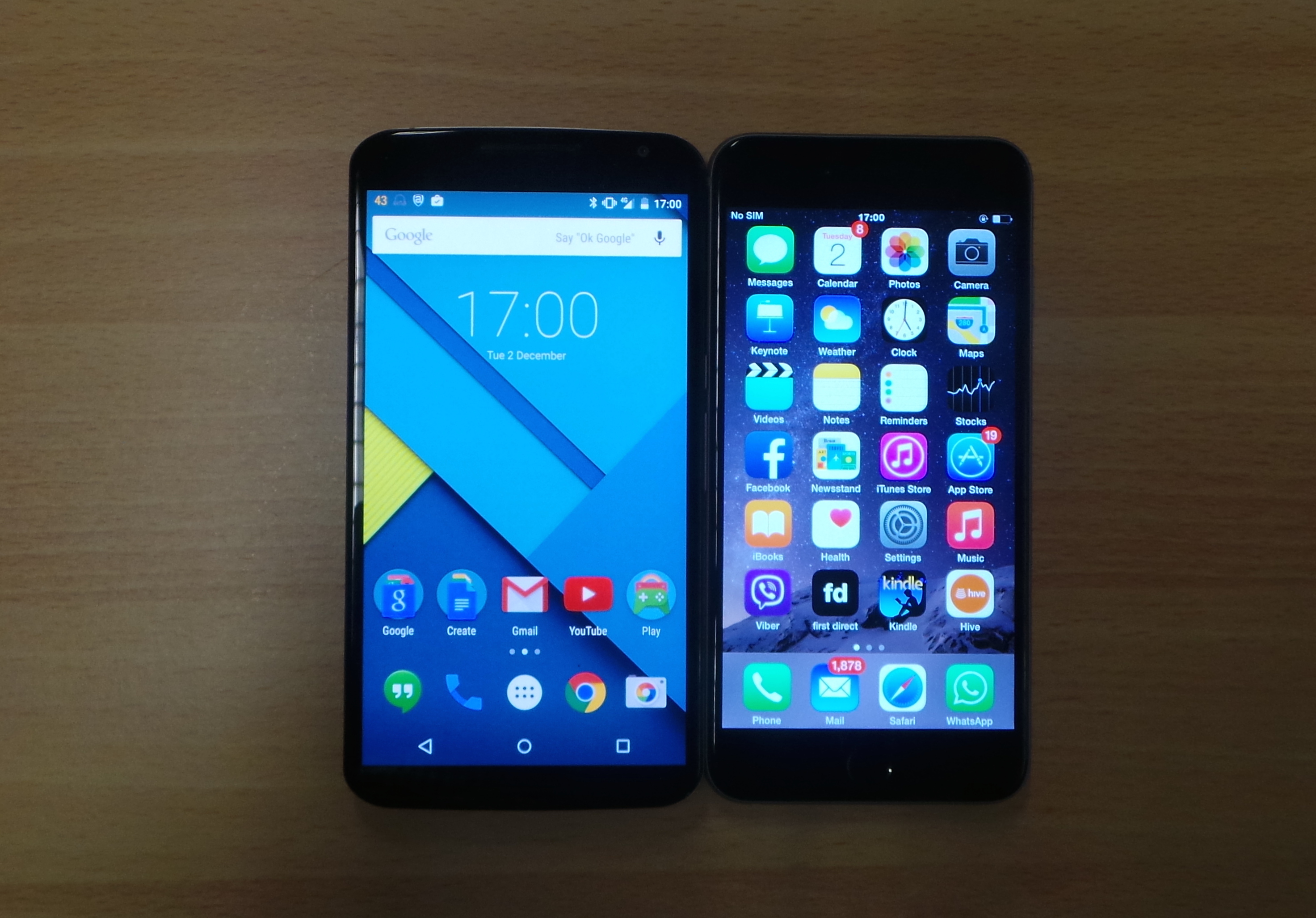
The sealed in battery poses long-term issues too. While we've had no problems so far - it's unlikely to have the same performance deep into an 18-month contract.
So which is best value?
Get the ITPro daily newsletter
Sign up today and you will receive a free copy of our Future Focus 2025 report - the leading guidance on AI, cybersecurity and other IT challenges as per 700+ senior executives
-
 Should AI PCs be part of your next hardware refresh?
Should AI PCs be part of your next hardware refresh?AI PCs are fast becoming a business staple and a surefire way to future-proof your business
By Bobby Hellard Published
-
 Westcon-Comstor and Vectra AI launch brace of new channel initiatives
Westcon-Comstor and Vectra AI launch brace of new channel initiativesNews Westcon-Comstor and Vectra AI have announced the launch of two new channel growth initiatives focused on the managed security service provider (MSSP) space and AWS Marketplace.
By Daniel Todd Published
-
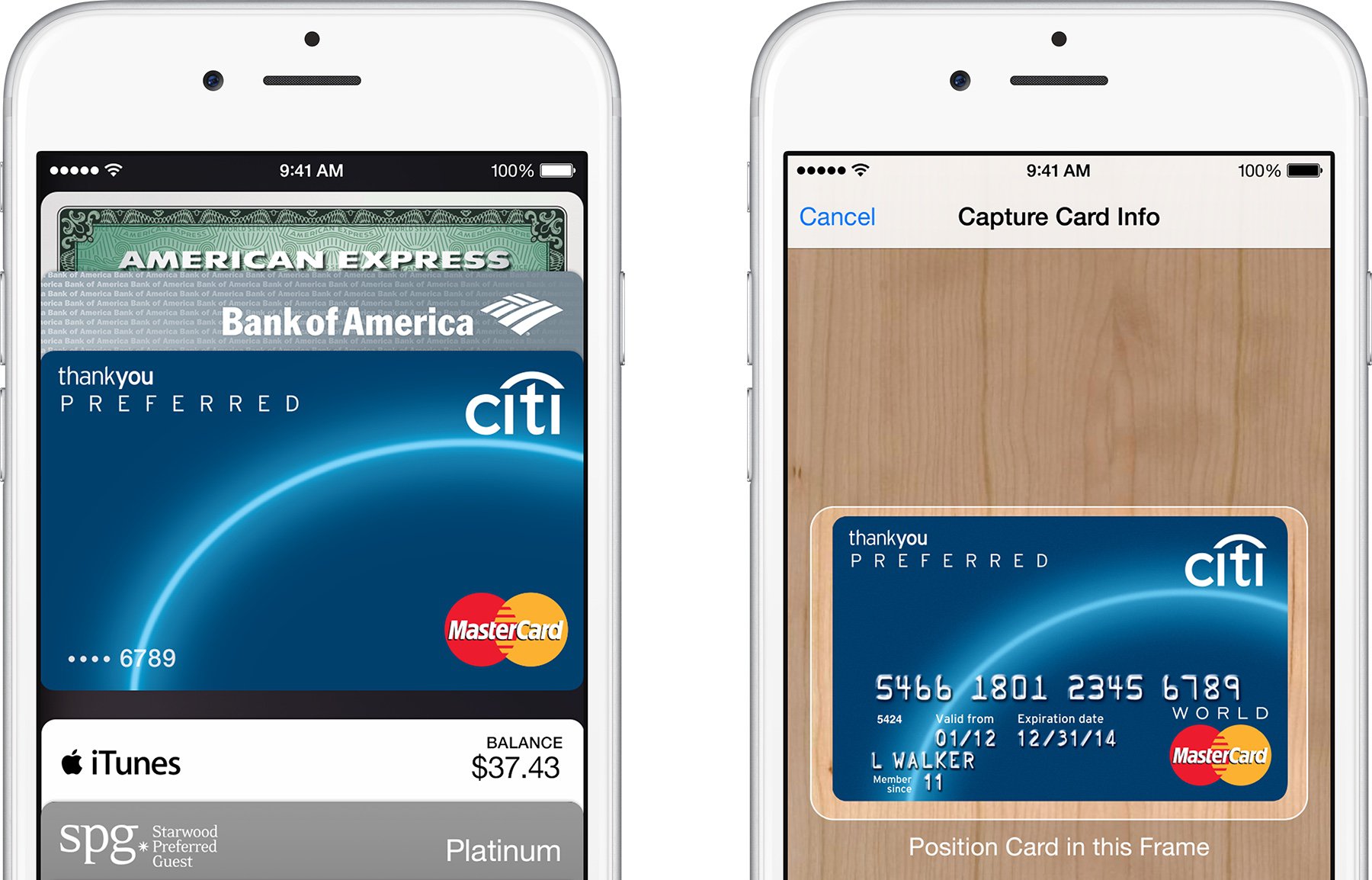 Why iPhone 6 users 'aren’t using Apple Pay'
Why iPhone 6 users 'aren’t using Apple Pay'News Apple's digital wallet isn't proving to be the success many expected
By Caroline Preece Published
-
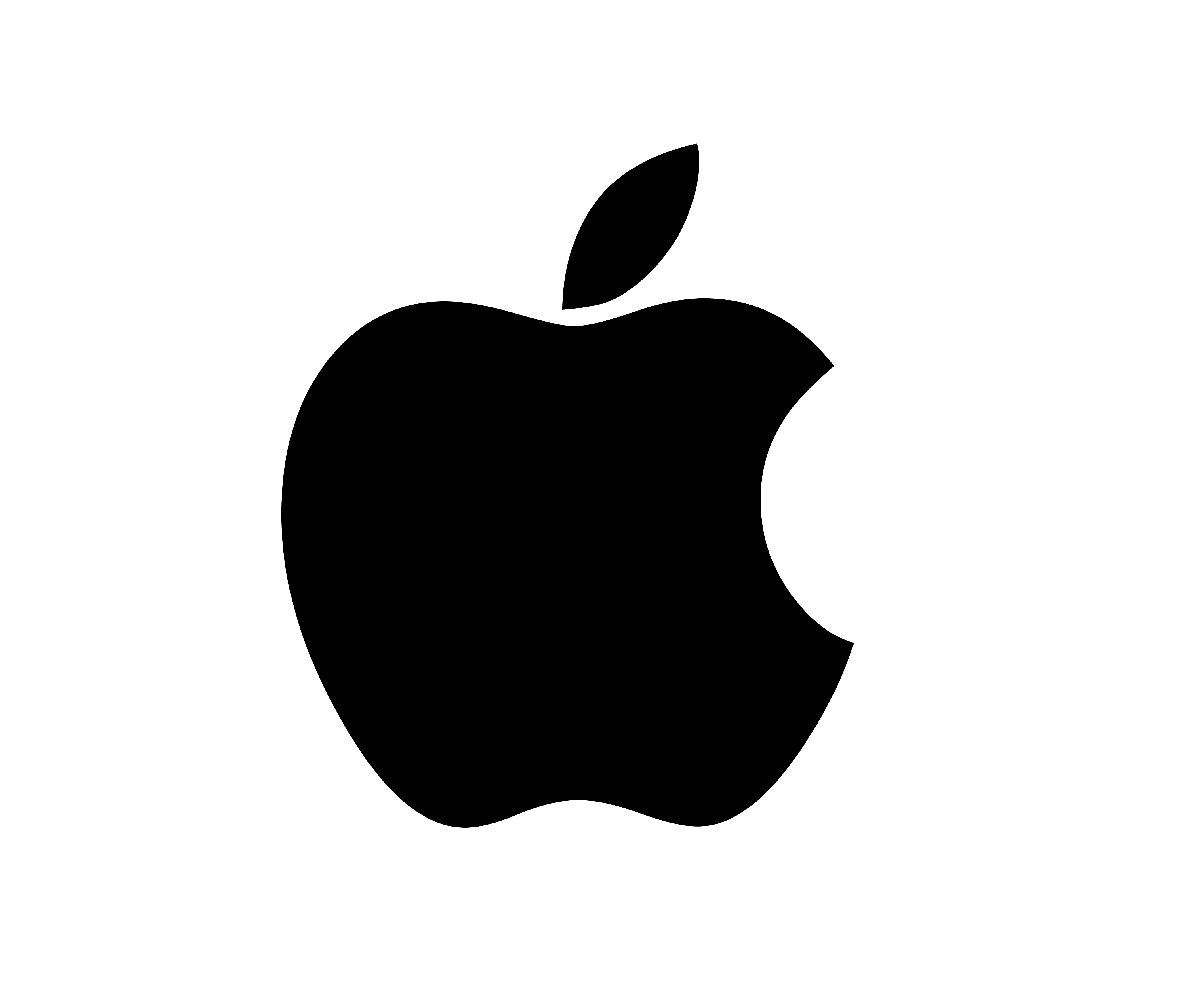 Apple patents ‘bendy’ iPhone and smart glasses
Apple patents ‘bendy’ iPhone and smart glassesNews Apple now has patents for a flexible iPhone and smart glasses, hinting at future direction
By Caroline Preece Published
-
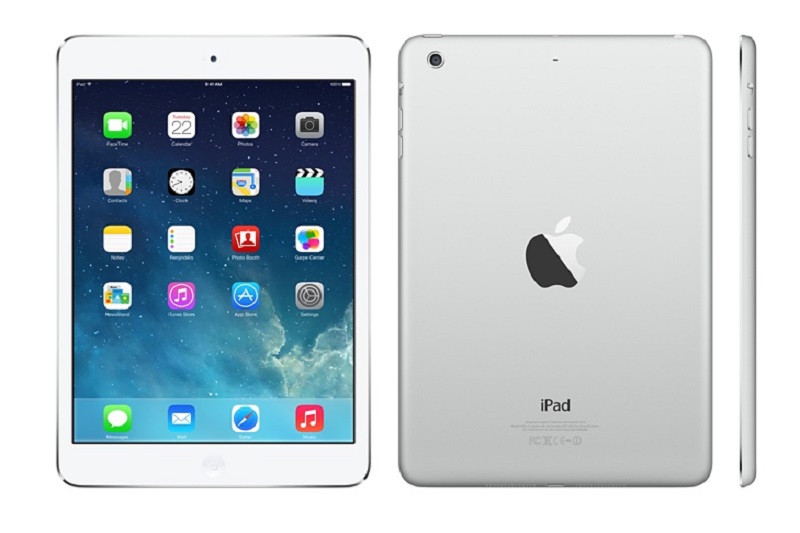 iPad mini sales hit by iPhone 6 Plus popularity
iPad mini sales hit by iPhone 6 Plus popularityNews iPad mini sales could be negatively impacted by Apple's iPhone 6 Plus
By Caroline Preece Published
-
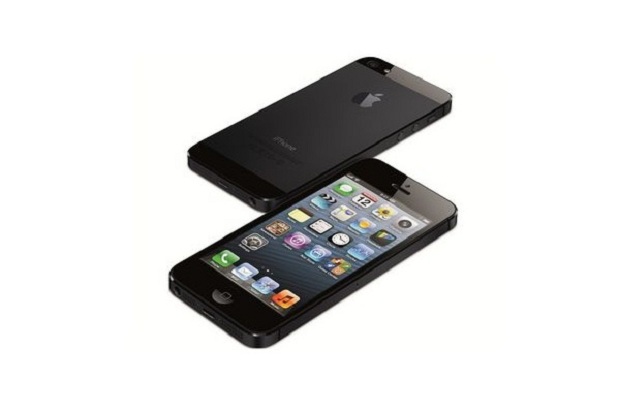 Apple may be working on 4-inch iPhone
Apple may be working on 4-inch iPhoneNews Despite entering the phablet market with the iPhone 6 Plus, Apple are reportedly going small again
By Caroline Preece Published
-
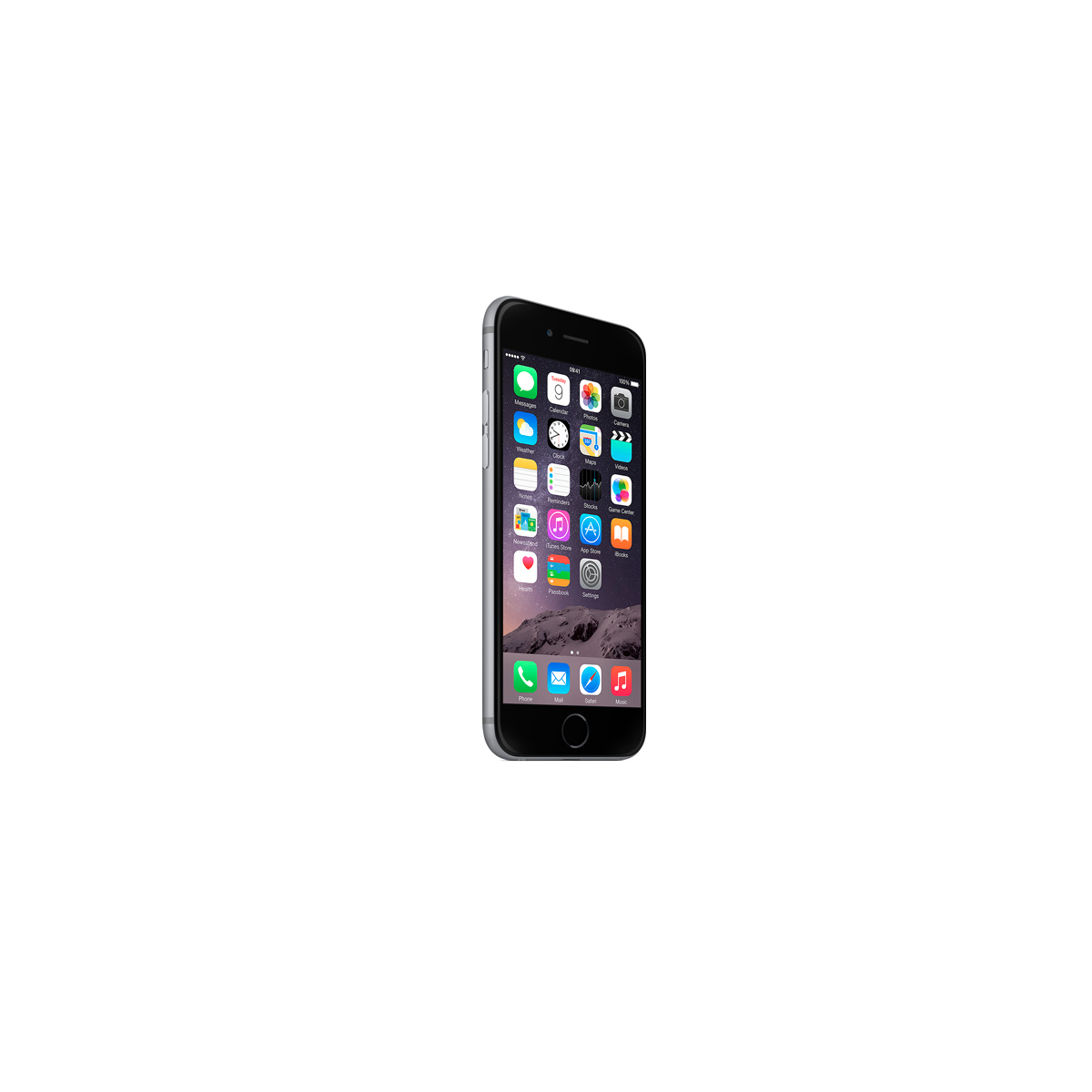 iPhone 6 users find devices more prone to surface scratches
iPhone 6 users find devices more prone to surface scratchesNews iPhone 6 and 6 Plus users claims their handsets are more likely to suffer scratching than previous models
By Caroline Preece Published
-
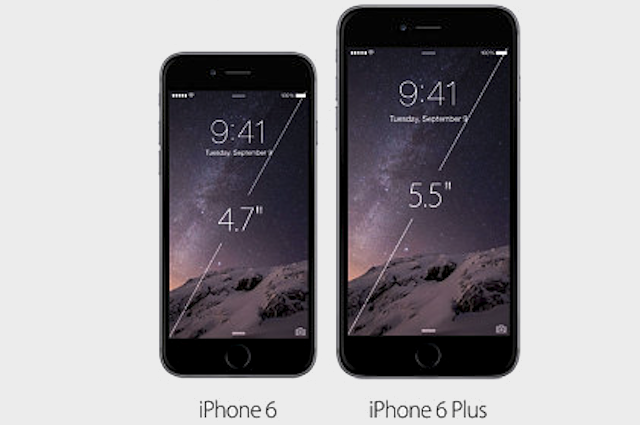 iPhone 6 Plus users speak up about "bendy" devices
iPhone 6 Plus users speak up about "bendy" devicesNews Apple has been left red-faced after users complained about their iPhone 6 Plus handsets bending in pockets
By Caroline Preece Published
-
 10 million iPhone 6 and iPhone 6 Plus' sold
10 million iPhone 6 and iPhone 6 Plus' soldNews Sales beat iPhone 5 and 5S sales last year and it's only available in 10 countries so far
By Clare Hopping Published
-
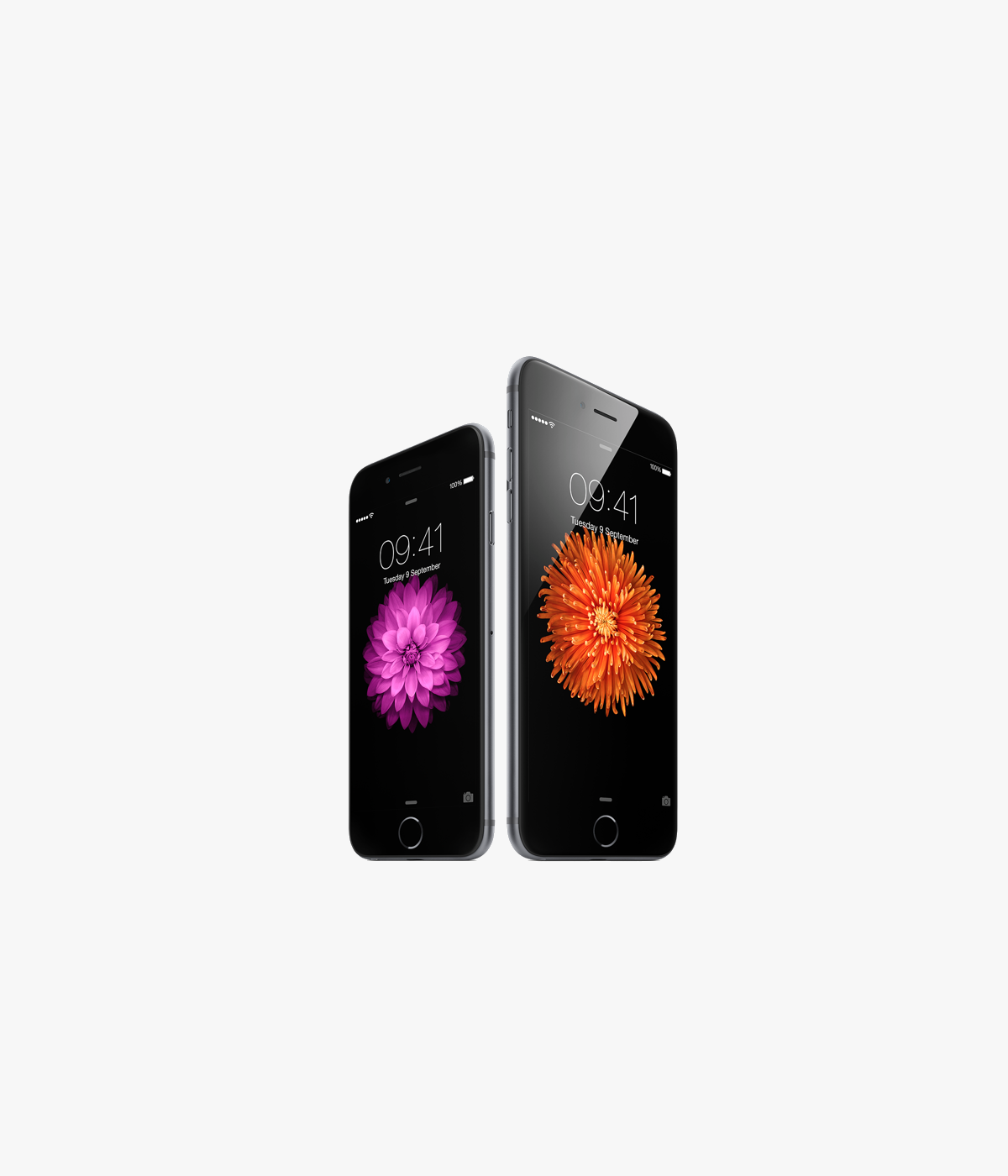 iPhone 6 & iPhone 6+ on sale in the UK today
iPhone 6 & iPhone 6+ on sale in the UK todayNews The iPhone 6 starts at £539 and the 6 Plus from £619
By Caroline Preece Published